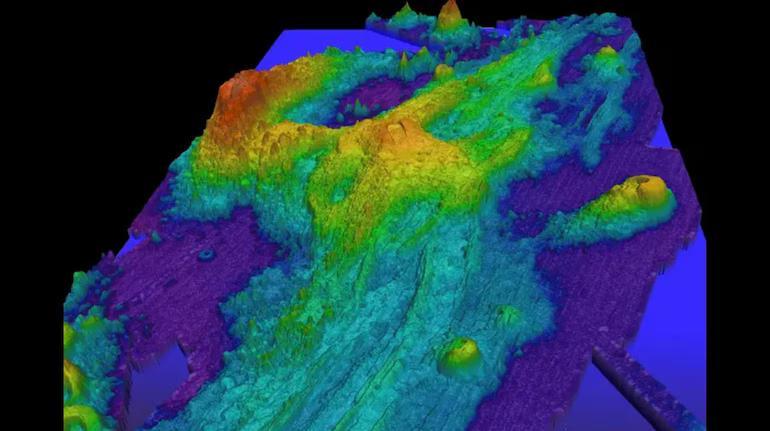
Giant Underwater Volcano in Pacific May Erupt in 2025: Scientists
Deep beneath the Pacific Ocean, a massive underwater volcano has been showing signs of unrest, and scientists are warning that it may be on the verge of a catastrophic eruption in the near future. According to Oregon State University volcanologists, the Axial Seamount, located about 482 kilometers off the Oregon coast, has been inflating since January and is currently exhibiting a significant level of seismic activity.
The Axial Seamount is a submarine volcano that rises over 1,000 meters above the seafloor and has a base that is about 10 times larger than the state of Rhode Island. While it is not an active volcano in the classical sense, its recent behavior has been causing concern among volcanologists and coastal residents.
In June, seismometers in the area detected over 2,000 earthquakes in a single day, a level of seismicity that is considered unusual for the volcano. This increased activity is believed to be caused by magma moving through the volcano’s system, a sign that it may be preparing for an eruption.
Dr. Trevor Reid, a volcanologist at Oregon State University, has been monitoring the volcano’s activity and believes that it may erupt before the end of 2025. “We’ve been observing the Axial Seamount for several years, and it’s been showing a lot of signs of unrest,” he said in an interview. “The increased earthquake activity, the inflation of the volcano – it’s all indicating that magma is moving and that there may be a larger event on the horizon.”
The Axial Seamount is part of the Juan de Fuca Ridge, a chain of underwater volcanoes that runs along the coast of Washington and Oregon. While it is not a stranger to geological activity, its recent behavior is certainly unusual.
In the past, the Axial Seamount has erupted several times, producing massive amounts of lava and ash that have been deposited on the seafloor. However, this time around, the situation is different.
“This is a more complex system than we’ve seen before,” Dr. Reid explained. “The magma is moving in a way that we haven’t seen before, and it’s causing a lot of stress in the system. It’s like a pressure cooker building up, and we don’t know when it’s going to blow.”
The Axial Seamount is not the only underwater volcano that is currently active. In recent years, there have been a number of other volcanoes around the world that have experienced significant eruptions, causing damage and displacement for those living in the surrounding areas.
In 2018, the Kilauea volcano on the Big Island of Hawaii erupted, sending lava flowing through the streets and causing widespread destruction. In 2019, the Whakaari/White Island volcano in New Zealand erupted, killing 21 people and injuring many others.
The Axial Seamount is not expected to cause the same level of damage as these other volcanoes, but its location and size make it a significant concern for those living in the surrounding areas.
“This is a major event that could have a significant impact on the coast of Oregon and Washington,” Dr. Reid said. “We’re not predicting a catastrophic event, but we do need to be prepared for the possibility of an eruption.”
Scientists are currently monitoring the volcano’s activity closely, using a network of seismometers and other equipment to track its behavior. They are also conducting additional research to better understand the volcano’s behavior and to prepare for any potential eruptions.
In the meantime, residents in the surrounding areas are being advised to stay informed about the volcano’s activity and to be prepared for any potential evacuations or other emergency measures.
While the Axial Seamount may not be a stranger to geological activity, its recent behavior is certainly cause for concern. As scientists continue to monitor its behavior, it is clear that this is an event that will be closely watched in the coming years.






